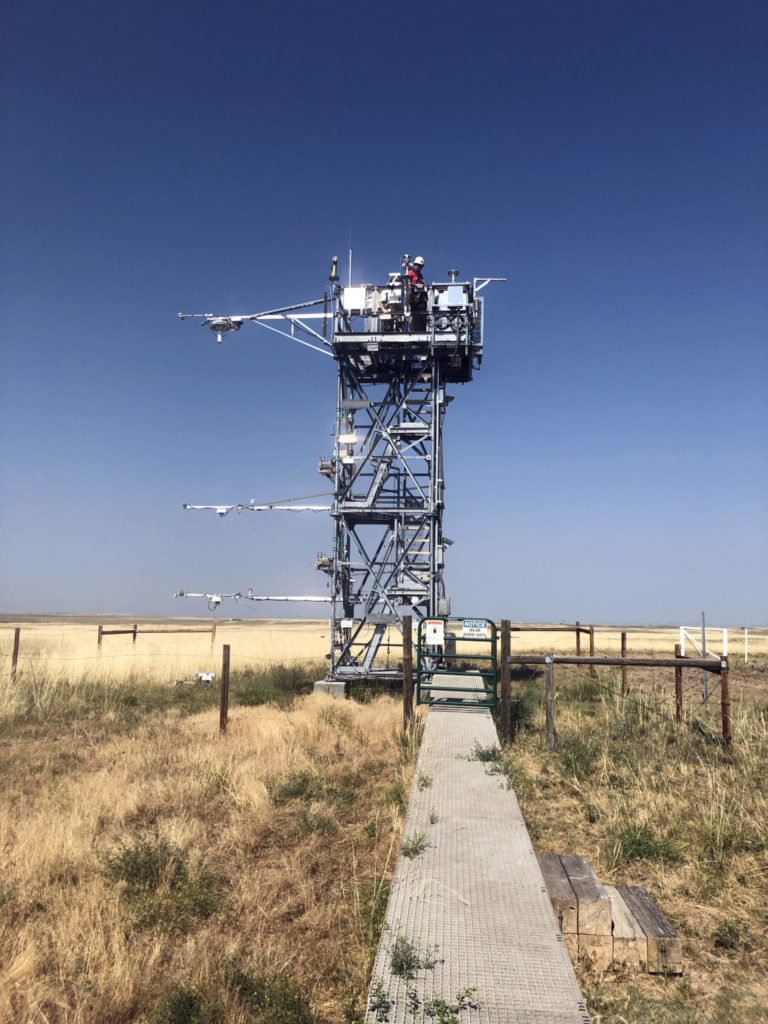
Several researchers from the Walter Scott, Jr. College of Engineering will study microbes in the air, or the aerobiome, as part of a new $12.5 million National Science Foundation project.
The Biology Integration Institutes: Regional OneHealth Aerobiome Discovery Network, or BROADN – including atmospheric scientists, agricultural biologists, microbiologists and sociologists from across Colorado State University – aims to improve our fundamental understanding of the aerobiome during this five-year project.
The aerobiome plays an important role in human, animal, plant and overall ecosystem health. Bacteria in clouds can even influence precipitation, but we don’t yet understand how weather, seasons and environmental stresses such as drought, agriculture and fire affect these microorganisms in the air.
BROADN plans to gather enough data through their joint effort to inform predictive models and mitigation strategies for problems as critical as the airborne transport of pathogens.
“There’s process-level understanding that still is not there,” said Sonia Kreidenweis, deputy director of the project and University Distinguished Professor in atmospheric science. “We hope to help push forward the global effort in understanding the processes controlling the biology of the atmosphere.”
Kreidenweis said now is the time for this ambitious undertaking. She is encouraged by the new and improved tools that will be employed in this study.
“Now we’re able to characterize airborne microbes in more detail, and to understand the aerobiome as a bigger system with impacts on plant, animal and human health,” she said.
The fascinating unseen biology of the air
Studying the aerobiome is challenging. Concentrations of microbes in the air are sparse compared to those in water or soil, requiring larger samples and more sensitive tests. Air samples must be meticulously handled to protect them from contamination.
Atmospheric scientist Paul DeMott, who has decades of aerosol expertise and fieldwork experience, will lead bioaerosol collection and aerosol measurements for BROADN. One of DeMott’s initial goals is to establish reliable sampling protocols for getting the most science from the samples.
DeMott’s team will fine-tune collection by figuring out how quickly they need to sample, before the aerosols change, and how long they need to sample to characterize the aerobiome for a specific area. They also will experiment with new ways to measure the exchange of biological particles from the land into the air, called fluxes.
“One of the things we’re trying to do in this study is to link what’s at the surface with what gets into the air and stays in the air and moves farther in the air,” Kreidenweis said.
The study will utilize NSF’s National Ecological Observatory Network, or NEON, by adding instruments that will take more detailed air measurements to several existing Colorado sites.
Once DeMott’s team has collected large enough samples, they will hand them over to biologists for specialized genetic analyses. The biologists will determine what’s in the air and what effect it has by being there.
From grassroots to institute
When the opportunity to form a Biology Integration Institute came along, the CSU researchers already had assembled their team. BROADN began as an informal gathering of CSU researchers interested in aerosols and microbes and coalesced thanks to a School of Global and Environmental Sustainability Global Challenges Research Team award, led by Angela Bosco-Lauth, assistant professor in biomedical sciences and co-principal investigator for the NSF BII grant.
Sue VandeWoude, director of the One Health Institute and a University Distinguished Professor, is principal investigator for the project. Co-principal investigators also include Jan Leach, University Distinguished Professor and associate dean for research in the College of Agricultural Sciences, and Eugene Kelly, deputy director of the Agricultural Experiment Station and associate dean for extension in the College of Agricultural Sciences.
Tami Bond, Walter Scott, Jr. Presidential Chair in Energy, Environment and Health and professor in mechanical engineering, will lend her aerosol expertise and big-picture thinking to the project, and Ken Reardon, professor in chemical and biological engineering, will manage education and outreach in addition to applying his knowledge of microbiomes and systems biology to the research.
“It really speaks to CSU that we have a group of people like this who are so willing to step outside of their boundaries to make progress,” DeMott said.
Scientists from the University of Colorado Boulder, the Global Atmospheric Microbiome Project and the Joint Genome Institute also will contribute to BROADN.
“We’re getting people from different disciplines together to work on a distinct and potentially solvable problem, and it should have real impacts down the road on plant-animal-human health and systems by understanding the movement of microbes in the air,” DeMott said.
Education and outreach
BROADN will provide a range of education and research experiences for postdocs as well as graduate and undergraduate students, including a new course and workshops on team science and communication.
“We aim to develop a transdisciplinary mindset in the project trainees,” Reardon said.
Undergraduate and M.S. students from CSU Pueblo and Doane University will help collect samples and run analyses during summer programs in Fort Collins.
BROADN researchers will share insights about the aerobiome with K-12 students and the public through exhibits at the CSU Spur campus, and they will develop an international seminar series for researchers studying the aerobiome.
Kreidenweis, DeMott and Reardon emphasized the significance of interdisciplinary relationships to this research.
“While the scientific community has been accumulating evidence of the presence of microorganisms in the atmosphere, we know almost nothing about how they got there; how events at ground level – such as drought, fire, plowing a field – affect their presence; whether some microbes are more likely to be in the atmosphere than others; whether microbes in the aerobiome are interacting; and what these microbes do when they return to the surface,” Reardon said. “Answering those questions requires an interdisciplinary effort – and that’s exactly what we’re doing in this project.”